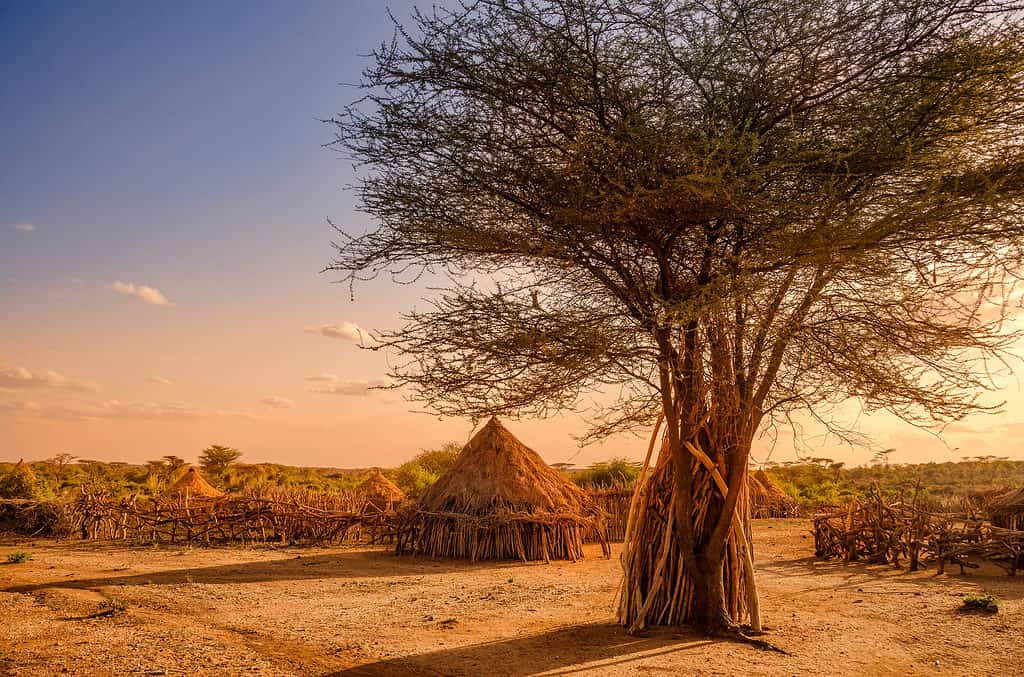We can learn a lot by unearthing old bones from our ancestors who roamed the earth thousands of years ago. We can begin to uncover the many mysteries surrounding our existence and help us understand the evolution of humans better.
Our evolution still holds much mystery, especially for those fascinated by how long we have been on this earth.
Back in the late 1960s, human remains were found in Ethiopia. Archaeologists were baffled at how old the bones were.
The Discovery

Officially called the Federal Democratic Republic of Ethiopia, Ethiopia is a country in the Horn of Africa where the oldest human remains were found.
©Luisa Puccini/Shutterstock.com
Between 1967 and 1975, archaeologists uncovered human bones in southwestern Ethiopia, Africa. The bones appeared to be human, but the age of the bones has been debated for years.
The following bones were found:
- Two partial skull bones
- Lower jawbone
- Part of a human torso
- Leg bone
- Around two hundred teeth
These bones were been named “Omo I” and “Omo II,” and they have been classed as homo sapiens. However, both sets of humans have different morphological traits, which is how scientists determined they were from two different humans.
The bones were uncovered along a site near the Oma River valley, known as the Omo Kibish sites. These sites are in the Omo National Park. Paleontologist Richard Leakey and his team from the Kenya National Museum were the ones who located the bones. Omo I remains were collected from Kamoya’s Hominid Site, while Paul I. Abell’s Hominid Site held Omo II remains.
The remains were buried in ash from a volcanic eruption that occurred many years ago. The area where these fossils were found is known for being an area that once had high volcanic activity. The area is now a dry wasteland, but lush forests existed with surrounding rivers back in the day.
Debates Over The Remains Age
These are some of the oldest human bones that were ever unearthed. Scientists are unsure about the exact age of these bones due to the high amount of ash. The bones were first believed to be around 200,000 years old. Still, scientists are debating whether they are 33,000 years older than they previously thought. This is due to the volcanic ash’s consistency and the area from which the ash was sourced and tested.
Oma I bones were found under ash. The volcanic ash and rocks buried with the bones were tested using the potassium-argon method.
Due to our limited ability to truly verify how old the bones could be, the debate rose about Omo I and Omo II’s age. Some scientists theorize that they are 200,000 years old, while others suggest they could be 33,000 years old because of the ash’s chemical fingerprint.
The Time Frame Of The Remains
According to Tim D. White, a professor of integrative biology at UC Berkeley, you need a time frame to understand how humans have evolved in Africa by using the proper dating techniques. If we don’t use the right techniques to understand how old the bones are, we will get an inaccurate reading.
Celine Vidal, a volcanologist at the University of Cambridge, found that the ash the Omo I bones were found in had a flour-like consistency, making it difficult for them to analyze and get an accurate reading of how old the volcanic ash is. A new analysis showed that the ash was similar to the ash that occurred from a volcanic eruption 233,000 years ago.
Vidal said that each volcanic eruption has a unique chemical fingerprint and that these ash layers can be analyzed to check the age of the deposits. This allows scientists to estimate the age of the deposits that it has matched with. Vidal now believes that the ash Omo I was buried 33,000 years older than other scientists originally believed them to be.
This has led White to raise questions about our evolution from Africa, such as what the environment looked like and what type of technology was used at the time. It all depends on the chronological framework, and there is controversy over whether Omo I was dated using ash that was found below the bones. Another point that raised controversy over the bone’s exact age is that the ash taken to date the age of Omo I was found further away.
Conclusion – What Does This New Discovery Mean For Us?
Finding the exact age of the Omo I bones will be able to give us a better understanding of how humanity has evolved over time. Hopefully, in the future, with new technology, we will be able to get a more accurate reading as to how old Omo 1 bones truly are. For now, the bones can be either 200,000 or 233,000 years old.
Up Next
- Oldest Woman Alive Today (And the Last 5 Titleholders)
- The Oldest Man To Ever Live
- What Is The Oldest River In The World?
The photo featured at the top of this post is © Luisa Puccini/Shutterstock.com
Sources
- Npr, Available here: https://www.npr.org/2022/01/13/1072867405/scientists-determine-age-of-some-of-the-oldest-human-bones
- Wikipedia, Available here: https://en.wikipedia.org/wiki/Omo_remains
Thank you for reading! Have some feedback for us? Contact the AZ Animals editorial team.







